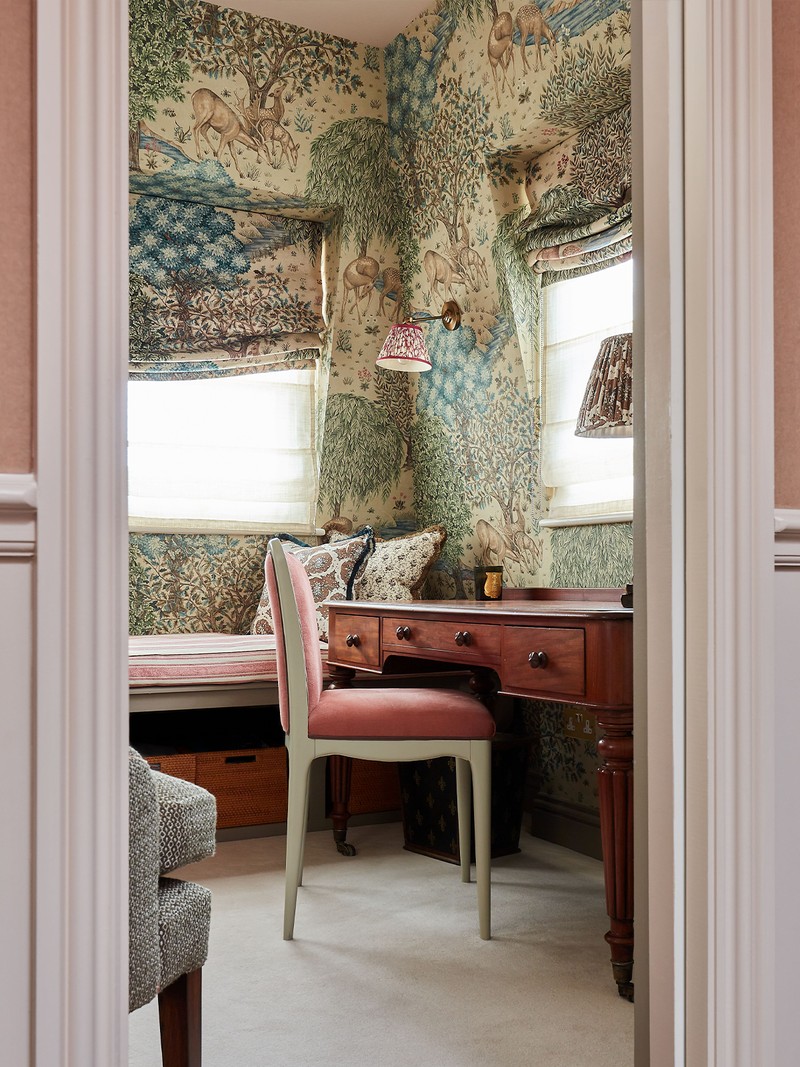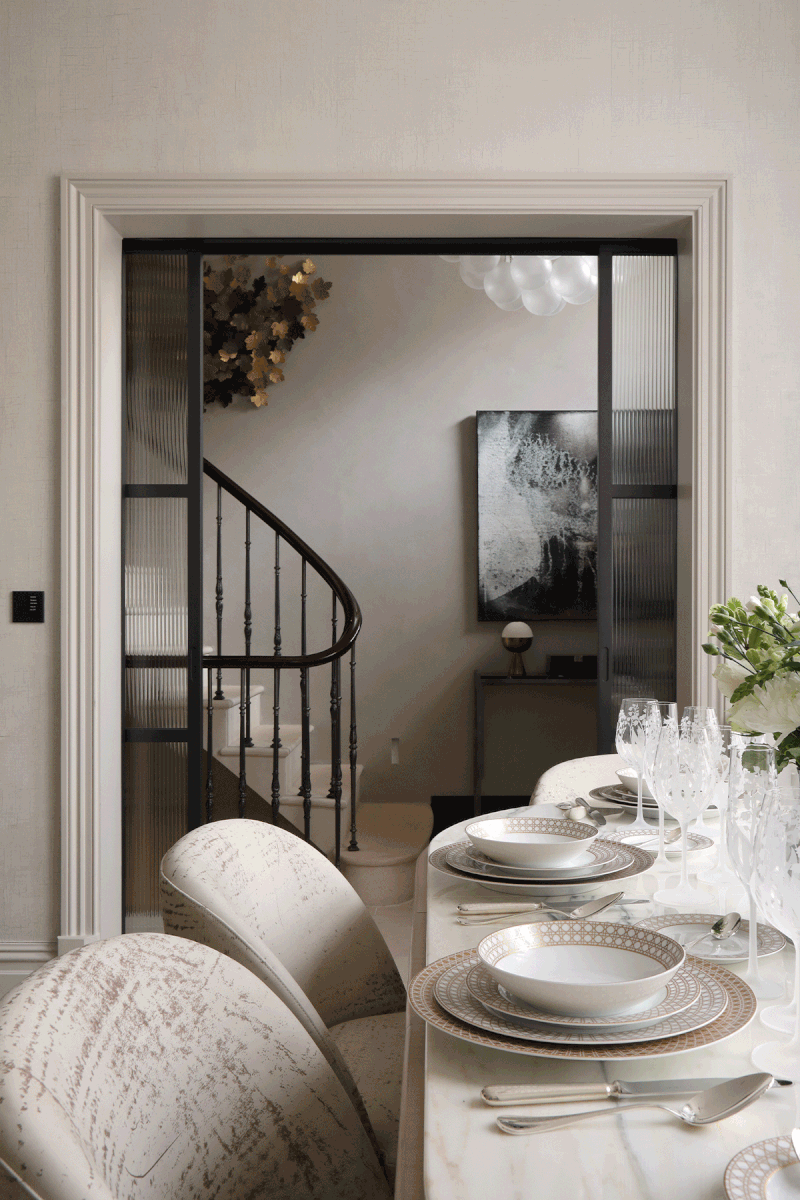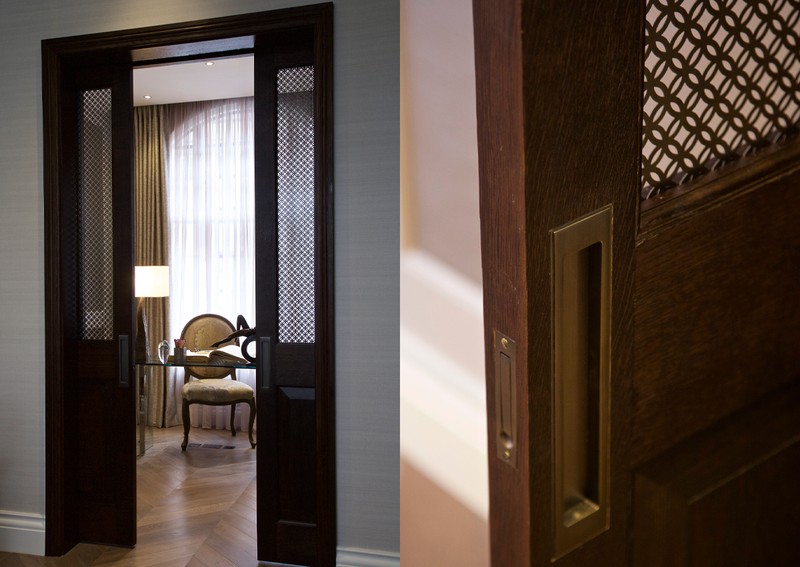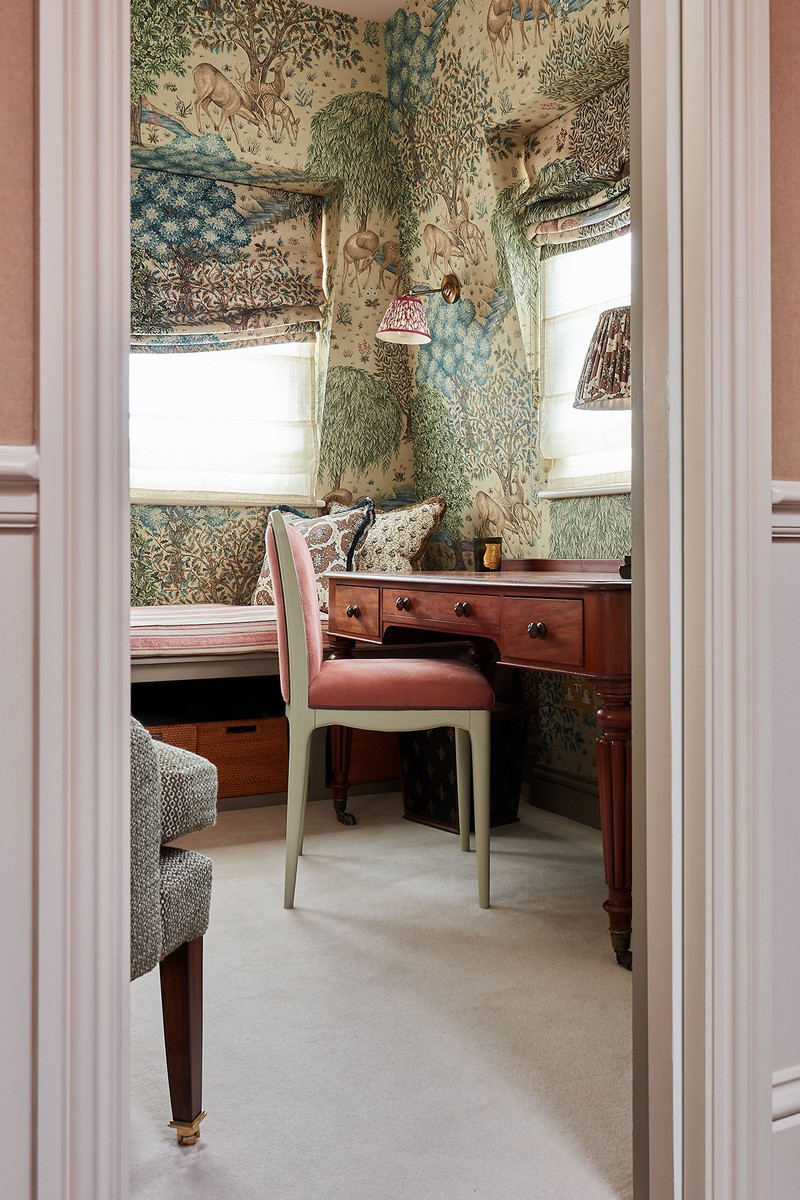What You Need To Know About Pocket Doors
First, what exactly is a pocket door?
“A pocket door slides into a ‘pocket’ that has been created within the adjacent stud wall, making the door almost disappear when it’s open.” – Tiffany Duggan, Studio Duggan
“Because the door slides into a pocket created in the wall, in line with the door, it allows the door to open without having a door swing into the room and take up additional space.” – Henry Prideaux
Is there more than one type?
“You can have a single or a double pocket door. There are lots of mechanisms on offer, but the premise is the same. Never go for something with exposed runners. Eclisse has some good options.” – Tiffany
How do they work?
“To get the most discreet result, take out the section of wall it is placed within (the size of the door and the pocket alongside), place a lintel above the opening to support any structure above, then install the mechanism and door – with it all boarded over and plastered in before adding skirtings, cornices and decorations. Another option is to install the mechanism next to an existing wall, but this means losing space within the room.” – Henry
Where would you use one?
“Pocket doors are commonly used in areas where space is limited or where a traditional swinging door would be impractical, such as bathrooms, walk-in wardrobes or laundry rooms. They are a great way of utilising tight spaces or areas you may want to close off when you have guests round. For instance, in a recent project, we used them between the formal dining room and kitchen, so hosting would be made easier and any noise from the kitchen would be reduced.” – Jane Landino, Taylor Howes
“I do think pocket doors can be a little overused. They are undoubtedly a useful way of avoiding a door swing where one would be in the way, or of complying with fire regulations when you actually want a nice big opening into, say, your kitchen. But I would say there should be a good reason for using a pocket door as opposed to a standard door. They are a little fiddlier to open and close, more expensive, and not as good at reducing sound movement – but that said we do use them a lot where they serve a useful purpose and aren’t being constantly opened and closed.” – Tiffany
Does a pocket door need to be planned into the design at an early stage?
“Yes – a cavity has to be built within the wall, so this is something to consider early on in a project.” – Tiffany
“Ideally, yes, as challenges may arise if the existing wall contains wiring or plumbing.” – Max de Roseé, De Rosee Sa
“That said, you can go down the route of adding it on top of an existing wall rather than removing a wall to put it in.” – Henry
/https%3A%2F%2Fsheerluxe.com%2Fsites%2Fsheerluxe%2Ffiles%2Farticles%2F2024%2F03%2Fsl-pocket-doors-malin-lynn-taylor-howes.png?itok=Bj31fgAa)
If you want to install a pocket door later on in the process, can you?
“Not without fairly substantial work and disruption. A workaround would be to use a sliding barn door that still slides open but does not recess into a pocket, sitting adjacent to the wall instead.” – Tiffany
“It is possible, if the wall isn't load bearing. In the case of a solid wall, you will need to carve out the designated space and install a lintel above the door frame.” – Max
Can it only be left natural or painted – or could you upholster, wallpaper or panel it?
“Pocket doors can be finished in various ways, including natural, painted or stained wood. Upholstering, wallpapering or panelling a pocket door is also possible, although these options may require additional planning and customisation, and would also need to be reviewed from a practicality point of view. You will want to also think of a sensible handle, such as a metal recessed pull, so the finish doesn’t deteriorate over time.” – Jane
“The design opportunities are fairly flexible with pocket doors. Wallpaper wouldn't be an issue, and the door itself can be a solid, French or glass door.” – Max
Are there any potential pitfalls to be aware of?
“Pocket doors don't provide as snug a fit as traditional doors, making them less effective in preventing noise transmission between rooms. Similarly, when it comes to containing odours, such as those from kitchens or bathrooms, interior pocket doors are also less effective.” – Max
“The walls can become quite wide, and the surrounding woodwork needed to cover up the openings can be a lot. Also, you can’t then put switches or sockets on the walls into which the pocket slides, because the back boxes will prevent the door from sliding.” – Henry
“They can also be more difficult to repair or replace than traditional swinging doors, as the mechanism is hidden within the wall. It is essential to select a high-quality, reliable pocket door system, and to maintain and care for it properly over time. You will also need to think about whether you’d prefer a push catch or discreet end pull on the depth of the door to open it.” – Jane
Finally, is there anything else to consider?
“It’s a minor point but decorating inside the cavity can be tricky, and should be done before the door is fitted.” – Tiffany
DISCLAIMER: We endeavour to always credit the correct original source of every image we use. If you think a credit may be incorrect, please contact us at info@sheerluxe.com.





